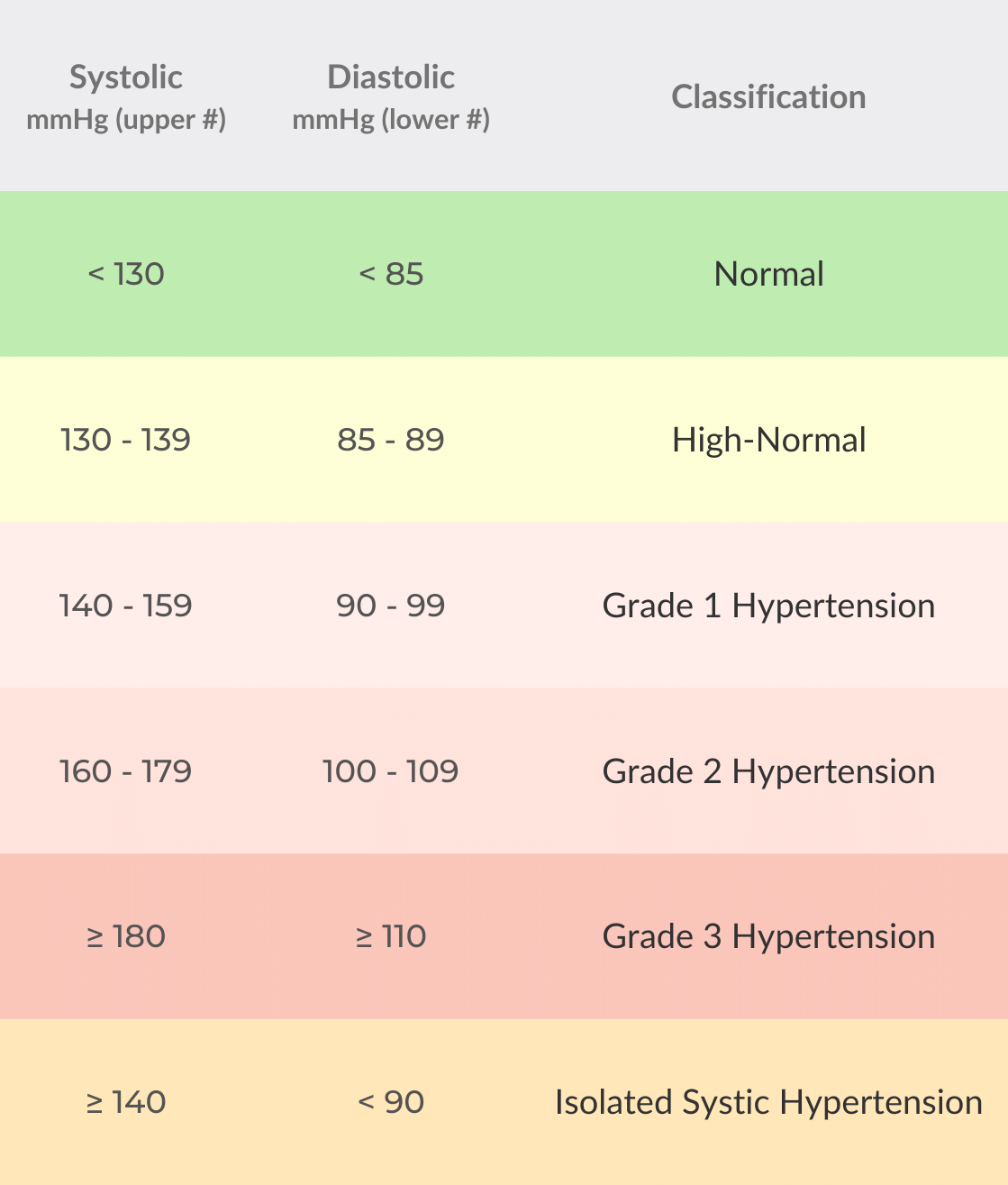
Blood Pressure
Did you know? It is good practice to take your blood pressure twice everytime to ensure accuracy of your measurements.
What is Blood Pressure?
Blood pressure is a measure of the force of blood flowing against the walls of the arteries. Arterial blood pressure is constantly changing during the course of the heart’s cycle.
The highest pressure in the cycle is called the Systolic Blood Pressure; the lowest is the Diastolic Blood Pressure. Both pressures, the Systolic and Diastolic, are necessary to enable a physician to evaluate the status of a patient’s blood pressure.
How to read your blood pressure & pulse
Blood Pressure (BP) is described by two numbers, for example, if your BP is 120/80, the
Systolic BP is 120mmHg, Diastolic BP is 80mmHg.
Pulse aka heart rate is the number of time your heart beats per minute. For your resting heart rate, the target is between 60 and 100 beats per minute (BPM)
Chart
Use the detailed blood pressure chart below to better understand your readings.

Isolated systolic hypertensions is graded according to the same level of systolic BP
( Ministry of Health Clinical Practice Guidelines )
About Hypertension
Hypertension or high blood pressure is a common condition that those living in urban areas are at risk of, especially among those more advanced in age. In Singapore, slightly less than 1 in 4 Singapore residents between 30 to 69 years old have been diagnosed with hypertension, and more than 1 in 2 persons between the ages of 60 to 69 have hypertension.
Blood Pressure (BP) is described by two numbers, for example, if your BP is 120/80, the
Systolic BP is 120mmHg, Diastolic BP is 80mmHg. Your blood pressure is considered high if your BP is above 139/89.
If untreated or inadequately treated, hypertension can cause the following problems:
- Coronary heart disease or heart failure
- Stroke
- Peripheral artery disease (narrowing of the blood vessels of the limbs)
- Kidney failure
Hypertension further increases the risk of developing atherosclerosis (hardening and narrowing of the arteries). The risk of suffering from the complications of hypertension is increased if you:
- Are a smoker
- Suffer from diabetes
- Have high blood cholesterol
- Are overweight (BMI of 23kg/m2 or higher)
(Health Hub)
Before Taking a Measurement
To help ensure an accurate reading, follow these directions:
- Avoid bathing, drinking alcohol or caffeine, smoking, exercising and eating for 30 minutes before taking a measurement. Rest for at least 5 minutes before taking the measurement.
- Stress raises blood pressure. Avoid taking measurements during stressful times.
- Measurements should be taken in a quiet place.
- Remove tight-fitting clothing from your arm.
- Sit on a chair with your legs uncrossed and your feet flat on the floor. Rest your arm on a table so that the arm cuff is at the same level as your heart.
- Remain still and do not talk during the measurement.
- Keep a record of your blood pressure and pulse readings for your physician. A single measurement does not provide an accurate indication of your true blood pressure. You need to take and record several readings over a period of time. Try to measure your blood pressure at the same time each day for consistency.
Why is it a Good Thing to measure Blood Pressure at Home?
Many factors such as physical activity, anxiety, or the time of
day, can influence your blood pressure. A single measurement may not be sufficient for an accurate 150 diagnosis. Thus it is best to try and measure your blood pressure at the same time each day, to get an accurate 100 indication of any changes in blood pressure. Blood pressure is typically low in the morning and increases from afternoon to evening. It is lower in the summer and higher in the winter.
(Omron)
